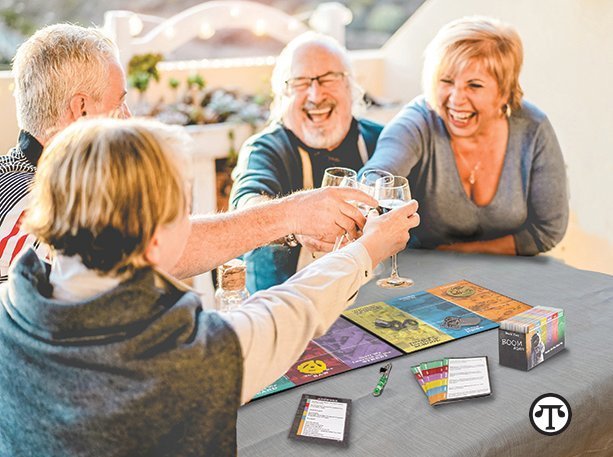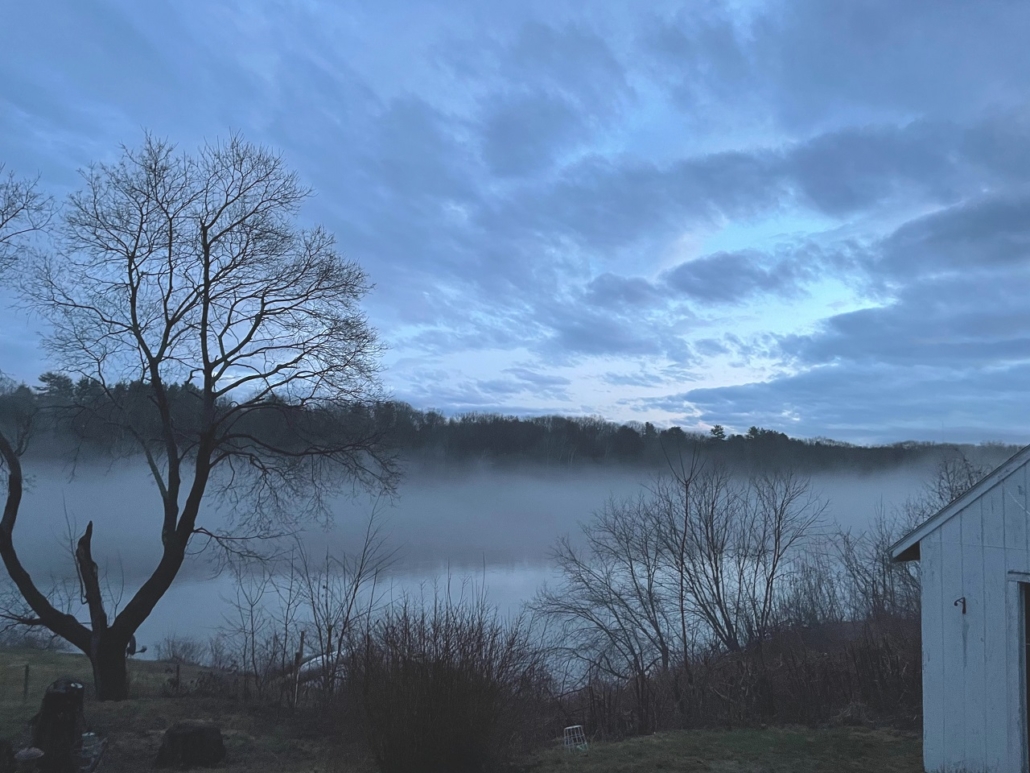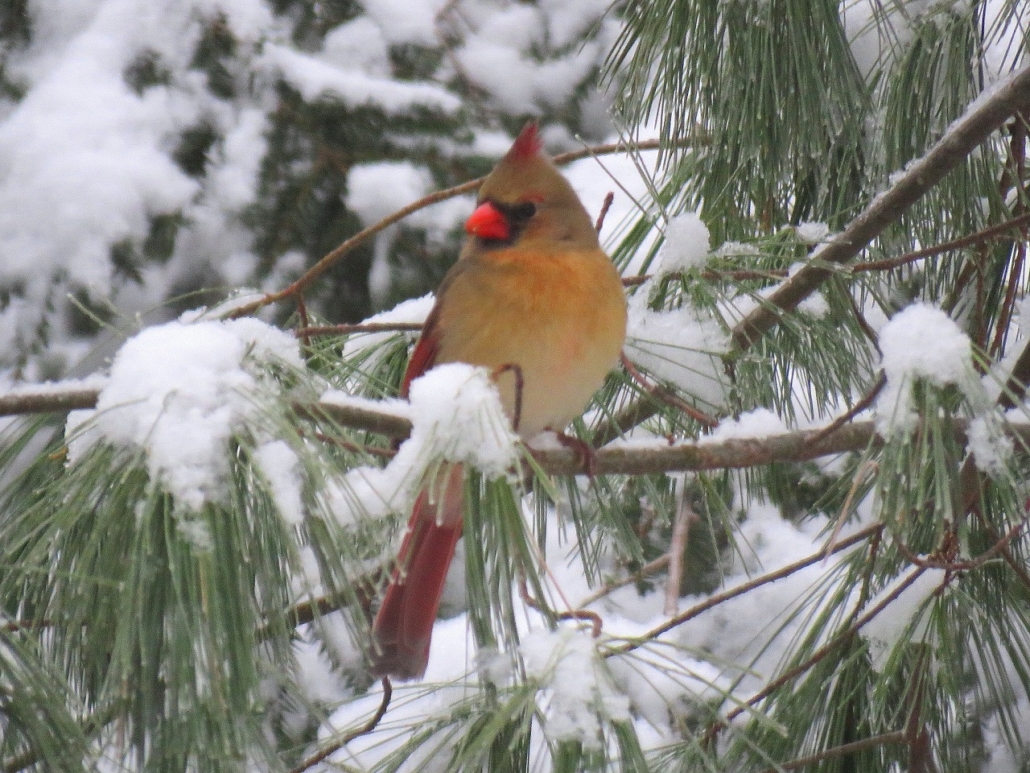FOR YOUR HEALTH: Types of home care services
/0 Comments/in For Your Health/by Website Editor Home health aides are professionals who can help with self-care, housework, cooking and more. They might also perform some basic medical tasks. Home health aides sometimes have medical training, so they might be certified nursing assistants (CNAs) or licensed practical nurses (LPNs). However, there aren’t any specific standards requiring a home health aide to have particular training or certification. If you’re looking for someone to help with any medical-related tasks, ask about certifications when choosing your provider. Medicare or Medicaid might pay for help from a home health aide.
Home health aides are professionals who can help with self-care, housework, cooking and more. They might also perform some basic medical tasks. Home health aides sometimes have medical training, so they might be certified nursing assistants (CNAs) or licensed practical nurses (LPNs). However, there aren’t any specific standards requiring a home health aide to have particular training or certification. If you’re looking for someone to help with any medical-related tasks, ask about certifications when choosing your provider. Medicare or Medicaid might pay for help from a home health aide.
Nurses
Home care nurses often handle the basic medical needs of those aging in place, like tracking their vitals, giving them IV medications and changing bandages. These professionals could either be licensed practical nurses (LPNs) or registered nurses (RNs). The higher level of care a person needs, the more likely their nurse will be an RN. Sometimes, a nurse will visit a patient less frequently but will manage a team of home health aides that visits the person every day. Medicare or Medicaid might pay for help from a home care nurse.
Geriatric care managers
Geriatric care managers are professionals that help caregivers figure out how much care their loved one needs and what living situation might be best for them. They also help caregivers and families navigate the medical system and figure out how to pay for care and hire appropriate home care professionals. Geriatric care managers often have backgrounds in gerontology, social work, nursing, psychology or another related field. You’ll often have to pay out-of-pocket to hire a care manager, but it could be worth the investment if they help you save money in other ways.
Companion services
Companion services vary a lot. Companions might just be someone who keeps your loved one company, or they might also offer transportation and housekeeping services. Companions don’t handle any medical tasks, and they don’t usually help with bathing, grooming or other activities of daily living (ADLs). Because these individuals don’t provide medical care, Medicaid and Medicare won’t pay for them. You may be able to find a community service organization, like Volunteers of America, that provides these services for free.
Meals on Wheels
Meals on Wheels is a national organization that operates in most communities in the United States. It works with local businesses and volunteers to serve meals to people over 60. The organization delivers meals to people in their homes, and the volunteers who drop meals off provide some companionship to seniors. The group also serves meals in local community centers, so people who can drive can get out of the house to socialize. These services are free or low-cost, depending on where you live.
Community villages
Villages are nonprofit organizations designed to help people age in place. Villages coordinate volunteers and paid workers to organize social and educational activities. Villages typically offer transportation services and limited in-home assistance as well as discounted services from health professionals. Each village is independently operated, so the services offered in your area will vary. To find out about a village near you and learn more about these organizations, visit the Village to Village Network’s website.
PACE programs
Programs of All-Inclusive Care for the Elderly, or PACE, is a part of Medicare and Medicaid. The programs provide as much care as feasibly possible to people in their own homes. For example, someone in a state with PACE might be eligible for in-home care, social work counseling and many other services.
Programs in different parts of the country have slightly different offerings, but the overall goal is to keep people in their own homes as long as possible. These programs currently exist in just over 30 states, but they don’t necessarily cover the entire state. To find out about PACE programs in your area, visit the PACE page on the Medicare website.
Article shared by ConsumerAffairs.com
SOLON & BEYOND: Solon elementary school news
/0 Comments/in Solon & Beyond/by Marilyn Rogers-Bull by Marilyn Rogers-Bull & Percy
by Marilyn Rogers-Bull & Percy
grams29@tds.net
Solon, Maine 04979
I was very pleased to receive the Solon School newspaper for this week’s column, with a pretty picture of a flower and the words HAPPY SPRING; it made my day!
Will start with the Third Quarter Honor Roll: All A’s, Lane Frost, Olive MacDonald and Jayden McKenney. All A’s & B’s, Isabella Atwood, Maxx Caplin, Charlotte Hamilton, Ethan Plourd, Martin Plourd, Hunter Pouliot, Dylan Priest, Spencer Rogers and Rowdy Taylor. Congratulations! Now for the Principal’s Message: Spring is upon us, and our students are enjoying more time outside. We are happy to be able to open windows wider to bring in the fresh air and to engage our students in some outdoor learning activities.
Many of our remote learners have returned to in-person learning, and we are happy to have them back. After not seeing all of our students last spring, it is so nice to have them here this year!
Next week is Staff Appreciation Week. I want to celebrate the wonderful teachers and staff that we have here at Solon Elementary School. You can be sure that our children are their top priority!Thanks to them to them for their hard work and dedication in this unique and challenging school year.
Plans are already in the works for summer! We are in the process of planning our Summer School programs, and more specific information will be forthcoming. Mrs. Laura Layman is also planning a Summer Rec program sponsored by the town of Solon for three weeks in July here at the school. We’ll share that information with families once we receive it. Families have already received forms to register their children for the town of Solon’s summer sports programs.
Important dates for spring are the public hearing on the school budget, scheduled for May 27, at 6: p.m., at Carrabec High School, and the budget referendum in each town on June 8. Another date the students are looking forward to is the last day of school, June 10! Enjoy this beautiful Maine spring and please contact us with any questions or concerns. Thank you for your support.
Solon School Participates in Walking School Bus. On April 7, students and staff participated in a Walking School Bus activity. They met at the Solon Thrift Store and walked to school, respecting social distancing guidelines. Once at school everyone enjoyed a great breakfast prepared by school cook Cindy Lawrence.
Walking School Bus activities are part of our 5-2-1-0 wellness plan. Our 5-2-1-0 School Champion, Ms. Rich, organized the activity for us. Another Walking School Bus activity is scheduled for May 12.
Solon Elementary School To Benefit From Sales of Shopping Bags: During the month of May, Hannaford Supermarket, in Skowhegan, will donate $1 for every purchase of its $2.50 reusable Fight Hunger Bags to our school for our food pantry. Every month Hannaford chooses a nonprofit organization to benefit from the sale of these bags.
Solon Celebrates the Week of the Young Child; Our school celebrates the Week of the Young Child, April 12-16, with special activities organized by our preschool staff. Our students enjoyed “Tasty Tuesday” with delicious fruit and yogurt parfaits on April 13 and helped clean up the school grounds on Work Together Wednesday, April 14.
Solon holds spring fever festival week: During the week of March 22-26, Solon Elementary School celebrated the arrival of spring with a Spring Fever Festival. Here are some of the special activities organized by Mrs. LaChance: Guest readers videotaped themselves reading spring books, and teachers showed these videos to their students. Our superintendent, Mr. Tracy, came to read to them during lunch time. Each day had a dress-up theme for students to follow such as Tie-Dye Tuesday and Time to Shine Thursday. Students played “What’s in My Egg” using riddles to help them guess what was in two big eggs sitting on the counter by Mrs. McFadyyen’s desk. During one period each day, teachers switched classes. Each one read a spring book and did a spring craft or other activity with that class. Thus, students got to work with four different teachers besides their own during the week. An outside Easter egg hunt was planned for Friday but postponed due to rain until March 31. After the hunt, students received Easter treat bags.
I’m afraid I have used up most of the space for this column already, and there was still more about the Solon School that I will print next week. There will also be some crazy news about our bird friend that is driving us crazy! …and the wonderful week of celebrating my birthday. Many of you know how old I am and I feel blessed to have reached that elderly number!
And here is one of my thoughts, (which I found on the cover of a book that I have, and it says “Age doesn’t matter unless you’re a cheese”
And now for Percy’s memoir: “If you have an important point to make, don’t try to be subtle or clever. Use a pile driver. Hit the point once. Then come back and hit it again. Then hit it a third time – a tremendous whack. ( those words were from Statesman Winston Churchill.)
I’M JUST CURIOUS: Let’s start with the “firsts”
/0 Comments/in I’m Just Curious/by Website Editor by Debbie Walker
by Debbie Walker
Yes, today let’s start with “Firsts”. First such as diets (shoot that guy), first electric car (it wasn’t recently), First bottled water, First 911 call, and First UFO sighting (my grandmother had her theories).
So, the first diet printed was from William Banting in 1863. Mr. Banting was struggling with his 5-foot 4-inch body weighing in at 202 pounds. The food plan that worked for him was a low carbohydrate, high protein diet. He published a pamphlet, Letter on Corpulence, Addressed to the Public. (Corpulence is another word for fat! Why not just say fat, we all recognize that word! I can say such because I suffer from it as well.) Diet experts are still tweaking the Banting Diet to this day. There are many new diets offered every day.
Did you know that 130 years ago, electric cars outsold gas powered vehicles? The first U.S. car dealership in 1896 sold only electric cars. It seems like there is a question as to who created them, one of three from 1832 to 1834. In 1907 there was an illustrated guide to autos that listed 69 different electric vehicles from around the country. It looked as if the electric car would become the new standard. Toyota Prius was not the first hybrid. It was Ferdinand Porsche nearly 100 years before using the same charging principle.
It’s likely a combination of cheap gasoline, the electric starter for gas powered cars, improved roads and perhaps the failure of the electric vehicle joint ventures between Henry Ford and Thomas Edison.
All right then, we will move onto the First Bottled Water. Bottling water for sale goes back to 1622 north of London, United Kingdom. Water was coming up through the cracks of granite, what became the Holy Well Bottling plant. It was thought this water had healing properties. It was bottled and sold. In Switzerland in the late 1700s selling carbonated spring water was successful. After that it lost its popularity until plastic bottles were invented. And since 2009 the original Holy Well was purchased and restored and is back in production if you would like to try some.
Next, I’m passing on some information about the First 9-1-1 call. It was February 16, 1968, in Haleyville, Alabama. The National Association of Fire Chiefs called for the creation of a universal emergency number in 1957.
Next up is the First UFO sighting. Would you believe Puritan settlers in 1639 were the first to report the strange flashes of light in the night skies after watching for about two to three hours. In 1897, in Texas, a reporter reported sightings. The term flying saucer originated in 1947 when a pilot reported seeing nine boomerang-like objects flying through the sky.
If you are interested in more information on these Firsts, use your computer and go to FarmersAlmanac.com. I have had more fun reading their huge variety of subjects and info. They are not all weather and gardening, as you can tell from reading my little excerpts of their Fabulous Firsts. Type in a subject of interest and see if one of their writers was interested as well.
I’m just curious what you will look for. Please, any and all comments or questions send to DebbieWalker@townline.org. Thank you for reading and have a great week!
REVIEW POTPOURRI – Composer: Sergei Prokofiev
/0 Comments/in Review Potpourri/by Website Editor by Peter Cates
by Peter Cates
Sergei Prokofiev
Sergei Rachmaninoff (1873-1943), Sergei Prokofiev (1891-1953) and Dimitri Shostakovich (1906-1975) are, for me, the three most outstanding 20th century composers to have emerged from Russia. I have written previously of Rachmaninoff and Shostakovich and would like to focus on Prokofiev.
He was a child prodigy as a composer and pianist, dazzling many but also antagonizing them with his arrogance. For example, in performance classes, he would keep lists of his classmates’ mistakes.
His first ballet Chout earned praise from Igor Stravinsky and Maurice Ravel; later he and Stravinsky had a falling out for a few years but Stravinsky considered Prokofiev the greatest 20th century composer, next to himself.
In 1918, he left Russia because the chaos from the Revolution was leaving Prokofiev with little means of earning a living. With the permission of the People’s Commissar, he headed for the United States and achieved success as a pianist. He would also reside in France for several years but, for some mysterious reason, moved back to the Soviet Union in 1936, just as Stalin’s bloodbaths were cranking up.
His music did find favor with the authorities most of the time. However, in 1948, Prokofiev, Shostakovich and Armenian composer Aram Khachaturian (1903-1978) were severely criticized by the government for ‘degenerate formalism’ in their music, the kind of criticism that could have deadly implications for them and their supporters. Such attacks were random, depending on Stalin’s fickleness and paranoia. Prokofiev made a sincere apology and then went on composing as he pleased.
During the early 1920s in Paris, Prokofiev met and married a Spanish singer, Lina Codina (1897-1989) with whom he had two sons, Sviatoslav (1924-2010) and Oleg (1928-1998). Starting in 1940, he began an affair with writer and librettist Mira Mendelson (1915-1968) and divorced Lina in 1947 to marry Mira (the courts ruled his first marriage as null and void because Prokofiev married his first wife in Germany and never asked the Communist government for permission.).
Three months after the divorce, Lina was arrested for espionage because she tried to send money to her mother in Spain. After nine months of interrogation, she was sentenced to 20 years of hard labor in Siberia and released in 1956, leaving Russia for good in 1974.
Because of high blood pressure and other health problems, Prokofiev suffered from frequent dizzy spells and, in 1945, fell, hitting his head on a staircase. He was forced to cut his composing activities down to one hour a day. He died on March 5, 1953, the same day as Stalin. Only 30 people attended his funeral, Shostakovich among them, while his coffin had to be carried by hand to the burial site because no hearse was available due to the lavish spectacle of Stalin’s funeral (among his pallbearers were Mao Zhedong (1893-1976) visiting from China, and KGB chief Laventiy Beria (1899-1953) who would be shot nine months later.).
The composer’s music was distinguished by tart, caustic and bracing rhythms, uniquely captivating harmonies and shimmering melodic beauty. For getting acquainted purposes, I would recommend his very famous Peter and the Wolf, 3rd Piano Concerto, 5th Symphony and Romeo and Juliet ballet. My special favorites are the sizzling Scythian Suite and 3rd Symphony from his earlier years and the magnificent 6th and 7th Symphonies from after World War II. Youtubes of his music are in plentiful supply.
Before he returned to Russia for good in 1936, the composer visited Walt Disney studios, in Hollywood, and was filmed playing music from Peter and the Wolf.
He became a devout Christian Scientist in 1924, believing it beneficial to his high strung personality.
He was also an accomplished chess player.
A quote – “I detest imitation!”
Robert P. T. Coffin
continued
Next paragraph from Robert P.T. Coffin’s essay, Kennebec Crystals:
“February came in murky. But the trotting horses of the Kennebec barns swung around at last and headed north: the thermometer went below zero and stayed there. Everybody began to breathe, again, and the grindstones started singing.”
Take note of the author’s ability to vivify the local scene of more than 150 years ago. One can picture the icicles hanging off beards, lips and nostrils, the inhalations of ‘murky’ air and the grindstones lifting their grating voices in harmony as the sparks fly in those work spaces.
More next week.
MAINE MEMORIES: Five old crows, plus one
/0 Comments/in Maine Memories/by Website Editor
image credit: British Pest Control Association
 by Evangeline T.
by Evangeline T.
Hello and welcome to Maine Memories, little snippets of life from our home state.
Spring has sprung, and the weather is much milder. Keep your fingers crossed that snow season is finally behind us…there’s always something interesting going on outside when May flowers bloom.
For this installment, here’s a true story about some old crows and how they’ve been paying me regular daily visits.
Each morning, for the last 14 years, I’ve thrown two slices of crumbled bread and some leftovers out onto my driveway to feed five old crows.
Now, you might ask, just how do I know these crows are always the same and not different? Well, believe me, I know them, and they know me.
If I’m not out my door with breakfast by 6:30 or 7 a.m., I’ll hear them cawing. They’ll sit in a tall elm tree at the end of my long drive, screaming until I appear. And when I do, they’re happy and excited.
These crows are a kind of family. This spring, there were four, and I assumed the worst. Then I noticed one kept filling his beak with pieces of bread, and when full, he’d fly away, return, and do it again.
Later in time, there were five adult crows, accompanied by a smaller one – more than likely a youngster. Now, I understood. The crow flying off with food had been feeding his mate, while she was busy egg-sitting.
At first, the young bird stood off to the side and waited for the adult to bring him something. This only lasted a short time before he got the message. Hurry up and snatch the food yourself, or you’ll go hungry.
So, now there are six crows, altogether.
It’s interesting to watch their different breakfast habits. One will delicately eat a single piece, not moving around much. Another will gather three or four chunks in his beak, head for the elm tree, where he sits and eats alone. The third picks up three or four pieces, flies about six feet away, dropping most of them. He still eats a full meal, though! The others walk around, poking at what’s left and getting the most they can.
One crow has what looks like white paint all over a wing. He must’ve brushed against a barn that was being painted. I think it’s distinctive!
What a pleasure, watching them every day – six smart crows doing their thing and living a simple life to the fullest. They never fight or steal food, like other birds. They’re just one happy family of old crows, plus one youngster. I’m so glad they flew into my life!
GROWING YOUR BUSINESS: Always be asking for references, referrals, recommendations, and endorsements
/0 Comments/in Growing Your Business/by Dan Beaulieu
 by Dan Beaulieu
by Dan Beaulieu
Business consultant
The very best way to grow your business is to get other people talking about you in a good way. Your customers bragging about your products and services to their friends, neighbors and family is the very best way to gain new customers, without a doubt.
Think about that. What do you do when you are considering buying a new car? You’ll ask someone who already has one, right? I mean you won’t just ask people you know, you’ll stop, and ask complete strangers in the Hannaford parking lot what they think of their car, if it’s the same brand that you are thinking of buying. Why do you think so many car commercials feature real people talking about how much they love their new car?
What about choosing a contractor, or a painter, or a plumber? You always ask the people around you who they can recommend and why they recommend them? Most of the time, if people have had a great experience, they’ll be happy to talk about it and even try to convince you to use the same people they used to the point where it is almost like they want you to join the cult.
The same applies to restaurants. People love telling other people about a great meal they had at that new Italian restaurant down in Winthrop, right?
People love telling people about great products, and services, and yes, meals, they have experienced.
But you as a business owner cannot be satisfied to just sit back and wait for those endorsements to come your way. You have to find a way to get those referrals about your company to come to you on a regular basis.
Obviously, the best way to get great referrals is to be the best. The best car dealer, the best contractor, the best restaurant. That is a given. But many times, that is not enough. Sure, many people, your customers will be happy, even delighted with what you are selling, but that is not enough. You have to be intentional in your quests for referrals. You have to ask for those recommendations. And if you go about it the right way, your customers will be more than happy to provide them.
Here are a few suggestions to seek and get referrals from your customers:
- Right after you have completed a service or sold a product, and the customer is delighted, ask him for written endorsement for your sales literature.
- If you are a contractor, ask the happy customer if you can take photos of your work to show prospective customers and, yes, ask again for the customer to give you an endorsement and also a reference.
- Offer your customers small incentives. A gift card to a coffee shop, for example, if they will refer you to the people in their own network.
Sales expert Jennifer Gluckow said it best in her book Sales in a New York Minute. In today’s social world, the repeat customer, the recommended customer, and the referred customer are the heart of business success.
Whatever you do always be asking for references, referrals, recommendations, and endorsements from your delighted customers. It is without a doubt the best way to grow your business.
SCORES & OUTDOORS: What happens in those vernal pools of spring
/0 Comments/in Scores & Outdoors/by Roland D. Hallee by Roland D. Hallee
by Roland D. Hallee
Like an idiot, I decided to stop into the office on my way to camp on Sunday. However, every chore has its rewards. On our way to camp afterwards, I noticed a small vernal pool in its customary spot on the Cross Hill Road, in Vassalboro. It’s always there, but it’s usually dried up during the summer. Vernal pools are a very important occurrence in our ecosystem. Let’s take a look at what actually happens there.
Vernal pools, also called vernal ponds, are temporary pools of water that provide habitat for distinctive plants and animals. They are considered to be a distinctive type of wetland usually devoid of fish, and thus allow the safe development of amphibian and insect species unable to withstand competition or predation by fish.
Despite being dry at times, vernal pools teem with life when filled. The most obvious inhabitants are various species of breeding frogs and toads. Some salamanders also utilize vernal pools for reproduction, but the adults may visit the pool only briefly. Other notable inhabitants are Daphnia and fairy shrimp, the latter often used as an indicator species to decisively define a vernal pool. Other indicator species, at least in New England, are the wood frog, the spadefoot toad, and some species of mole salamanders. Certain plant species are also associated with vernal pools, although the particular species depend upon the region.
 Vernal pools are shallow depressions that usually contain water for only part of the year. In the Northeast, vernal pools may fill during the fall and winter as the water table rises. Rain and melting snow also contribute water during the spring. Vernal pools typically dry out by mid to late summer. Although vernal pools may only contain water for a relatively short period of time, they serve as essential breeding habitat for certain species of wildlife, including salamanders and frogs. Since vernal pools dry out on a regular basis, they cannot support permanent populations of fish. The absence of fish provides an important ecological advantage for species that have adapted to vernal pools, because their eggs and young are safe from predation.
Vernal pools are shallow depressions that usually contain water for only part of the year. In the Northeast, vernal pools may fill during the fall and winter as the water table rises. Rain and melting snow also contribute water during the spring. Vernal pools typically dry out by mid to late summer. Although vernal pools may only contain water for a relatively short period of time, they serve as essential breeding habitat for certain species of wildlife, including salamanders and frogs. Since vernal pools dry out on a regular basis, they cannot support permanent populations of fish. The absence of fish provides an important ecological advantage for species that have adapted to vernal pools, because their eggs and young are safe from predation.
Species that must have access to vernal pools in order to survive and reproduce are known as “obligate” vernal pool species. In Maine, obligate vernal pool species include wood frogs, spotted and blue-spotted salamanders (two types of mole salamanders) and fairy shrimp. While wood frogs and mole salamanders live most of their lives in uplands, they must return to vernal pools to mate and lay their eggs. The eggs and young of these amphibians develop in the pools until they are mature enough to migrate to adjacent uplands. Fairy shrimp are small crustaceans which spend their entire life cycle in vernal pools, and have adapted to constantly changing environmental conditions. Fairy shrimp egg cases remain on the pool bottom even after all water has disappeared. The eggs can survive long periods of drying and freezing, but will hatch in late winter or early spring when water returns to the pool.
Not all vernal pool habitats are considered “significant”. In general, a vernal pool habitat is significant if it has a high habitat value, either because a state-listed threatened or endangered species, such as a spotted turtle, or a rare species, such as a ribbon snake, uses it to complete a critical part of its life history, or there is a notable abundance of specific wildlife, such as blue spotted salamander, wood frog, or fairy shrimp.
Do you have a vernal pool on your property and don’t know whether it is significant? The specific criteria describing a significant vernal pool are listed in DEP Rules, Chapter 335, and allow these resources to be identified in the field. Using these criteria, a person who has experience and training in either wetland ecology or wildlife ecology may identify and document a significant vernal pool; or the DEP may provide a written determination concerning whether or not a vernal pool habitat is significant.
“Significant vernal pool habitat” includes the vernal pool itself and the area within a 250-foot radius of the spring or fall high water mark of the pool, which is considered critical terrestrial habitat.
Since September 1, 2007, significant vernal pool habitat is protected by law under the Natural Resources Protection Act (NRPA). An activity in, on, or over these areas must avoid unreasonable impacts on the significant vernal pool habitat and obtain approval from the DEP, through a Permit by Rule or individual NRPA approval.
A permit by rule will be available if certain standards are met, and can be approved within 14 days. The standards do not create a mandatory setback or no-build zone, but do affect what can be done, so it is advisable to plan ahead. For more information on the NRPA, a copy of the rules addressing significant vernal pools, application forms, and related materials, see the NRPA page.
If you have questions, need hard copies of materials, or would like to request a field determination, contact your nearest DEP regional office, and ask to speak to the “on-call” person in the Land & Water Bureau, Division of Land Resource Regulation.
The Central Maine Regional Office is located at 17 State House Station, Augusta, ME 04333-0017; Phone: 207-287-7688 or 1-800-452-1942.
Roland’s trivia question of the week:
Which pitcher, who started for the Red Sox in the 1986 World Series, later enjoyed success coaching the Chinese national team?
FOR YOUR HEALTH: Baby Boomers Still Playing Together Even “Party Gaming” on Zoom
/0 Comments/in For Your Health/by Website Editor
The Boomer generation knows how to have fun—such as with a new pop culture trivia game about the days of their youth.
(NAPSI)—Over 70 million Baby Boomers grew up playing board games and watching game shows together—and they still love doing both.
A new pop culture trivia game is taking Boomers on a nostalgic road trip back to the ’50s, ’60s, and ’70s. Designed to be played by two teams, Boom Again features thousands of questions drawing upon Boomer’s memories of advertising slogans and jingles, politics and social movements, movies, music, television, and more.
Groups of Baby Boomers are laughing their way through memories on a wide variety of their experiences: from The Twist to Disco; American Bandstand to Soul Train; Doris Day all the way to Janis Joplin, and on to Steve Martin; Hula Hoops to The Pill; and poodle skirts to mini-skirts. And they are singing their way through all the music of their youth, too.
This game is clearly not an S.A.T. test with questions like:
• Name three of the most popular episodes of “I Love Lucy.”
• Name the original main courses from Swanson’s TV Dinners.
• What did Silly Putty have to do with the Sunday comic strips?
The wide array of material is organized into easily remembered categories:
Things We Heard—Music, jingles, famous speeches, lyrics, catchphrases
Things We Saw—TV shows, movies, commercials, magazines, sporting events
Things We Learned in School—The “3 R’s,” clubs, dances, school yard games
In The News—Politics, sports, world events, Sunday comics, murder, war
Stuff We Learned On the Street—Toys, Fashion, Cars, Social Movements, Dances, etc.
A Box Full of Memories
The game comes packaged in a “cigar box” familiar to Baby Boomers who stashed their stuff in those as kids. It has two boxes of cards with 2,244 questions, and Boomer era tokens including a Metal Skate Key, a “Students For Kennedy” Button, a center insert for a 45-RPM Record, and more.
There’s even a “Boomers’ Little Helper” magnifier in case someone forgets their readers.
An Antidote to Pandemic Isolation
Apparently nothing can keep a social Baby Boomer from hanging out with their friends. Party games have always brought people together. Now, even when friends and families haven’t been together in person, they have been playing Boom Again together on Zoom. It’s become known as a Boom Zoom!
Learn More
For MORE facts and to order the game, go to http://www.boomagain.com.
I’M JUST CURIOUS: Bits and pieces
/0 Comments/in I’m Just Curious/by Debbie Walker by Debbie Walker
by Debbie Walker
Some of these pieces you may know about and some you may be introduced to today. My hope is you find usefulness and hopefully a little humor, too, in what I am going to share with you. Most of this information is coming from the 2020 Farmer’s Almanac.
We’re going to start out with a couple Helpful Hints:
Reusable Storage: Don’t throw away any of those cardboard carriers of a 6-pack. You can use one for the cookouts. Use the individual holes for carrying ketchup, mustard, mayo and other things necessary. OR Use one for crafting or kids activities to hold supplies.
Home Spa: Tie a bunch of fresh eucalyptus to your shower head and let the smell turn your shower into an invigorating way to start the day. (It is said to open nasal passages).
Bug Bite Relief: (The bugs will return soon!) Soak a cloth in a mixture of two tablespoons of Epsom salt in one cup of water. Wring out and hold cloth over the bite for several minutes.
Plastic Snow Sled: (Summer use) Use a plastic snow sled with a rope lead to haul your camping gear from the car to your site. You can also use it for carrying planting supplies and tools around the yard, from one site to another.
Have you ever wondered about eating insects? (Me neither, but it’s kind of funny):
Crickets: Remove legs; dry roast, fry, or stir fry. There is also such a thing as cricket flour. I don’t have any, how about you? Oh, and you can get them at a pet store.
June Bugs/Beetles: Fry in oil/butter with shallots. (Oh, bummer, I am all out of shallots!)
Ants: Can be roasted in a dry pan and added as a flavoring or crunchy topping to other dishes. (If you ever wondered what to do about the ants I’ll bet you never thought to cook them up for a new taste!)
Pill Bugs (Sow Bugs): These insects are related to lobster and shrimp. Boil or sauté briefly in butter.
CAUTION: Avoid insects with bright yellow, red, or orange markings. Be aware of areas sprayed with pesticides. (And please check for more information before you try any of these things, please.)
Camping Hacks:
Bring two coolers – one for just the drinks and the other for food.
Duct tape: Always bring it. It has helped us out with medical problems and patching holes, use your imagination.
Tic Tac Containers: Fill them with your favorite seasonings. Use permanent marker to write what’s inside.
Fruit Flies: Fill a small bowl with apple cider vinegar plus two drops of liquid dish soap. Mix well. Fruit flies will be drawn to the bowl… and to their demise.
Philosofacts:
It doesn’t require many words to speak the truth.
Spring is when you feel like whistling even when your shoe is full of slush.
A snowflake is winter’s butterfly.
Aspire to inspire before you expire.
Some people only like the changes that jingle in their pocket.
I am just curious if you found any bits or pieces useful. Let me know, contact me at DebbieWalker@townline.org. I hope you found some things to smile at. Thank you for reading and have a great week.
Interesting links
Here are some interesting links for you! Enjoy your stay :)Site Map
- Issue for February 27, 2025
- Issue for February 20, 2025
- Issue for February 13, 2025
- Issue for February 6, 2025
- Issue for January 30, 2025
- Issue for January 23, 2025
- Issue for January 16, 2025
- Issue for January 9, 2025
- Issue for January 2, 2025
- Issue for December 19, 2024
- Issue for December 12, 2024
- Issue for December 5, 2024
- Issue for November 28, 2024
- Issue for November 21, 2024
- Issue for November 14, 2024
- Issue for November 7, 2024
- Issue for October 31, 2024
- Issue for October 24, 2024
- Issue for October 17, 2024
- Issue for October 10, 2024
- Issue for October 3, 2024
- Issue for September 26, 2024
- Issue for September 19, 2024
- Issue for September 12, 2024
- Issue for September 5, 2024
- Issue for August 29, 2024
- Issue for August 22, 2024
- Issue for August 15, 2024
- Issue for August 8, 2024
- Issue for August 1, 2024
- Sections
- Our Town’s Services
- Classifieds
- About Us
- Original Columnists
- Community Commentary
- The Best View
- Eric’s Tech Talk
- The Frugal Mainer
- Garden Works
- Give Us Your Best Shot!
- Growing Your Business
- INside the OUTside
- I’m Just Curious
- Maine Memories
- Mary Grow’s community reporting
- Messing About in the Maine Woods
- The Money Minute
- Pages in Time
- Review Potpourri
- Scores & Outdoors
- Small Space Gardening
- Student Writers’ Program
- Solon & Beyond
- Tim’s Tunes
- Veterans Corner
- Donate





